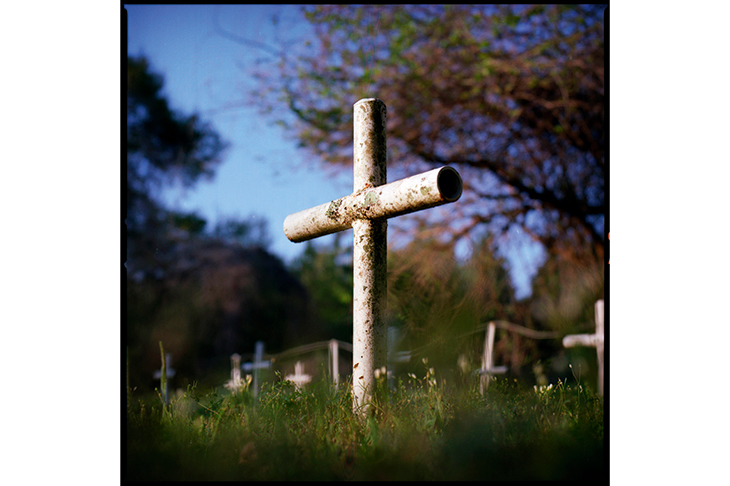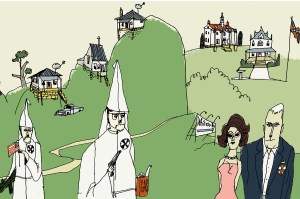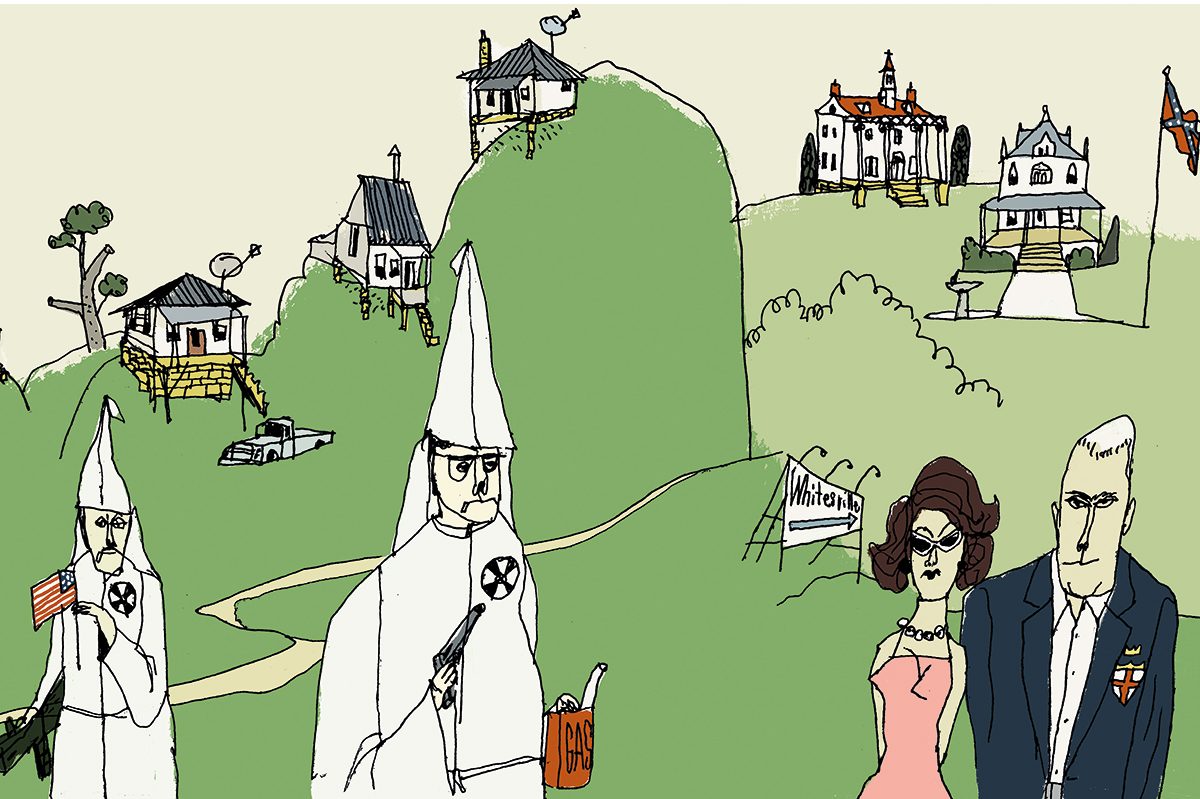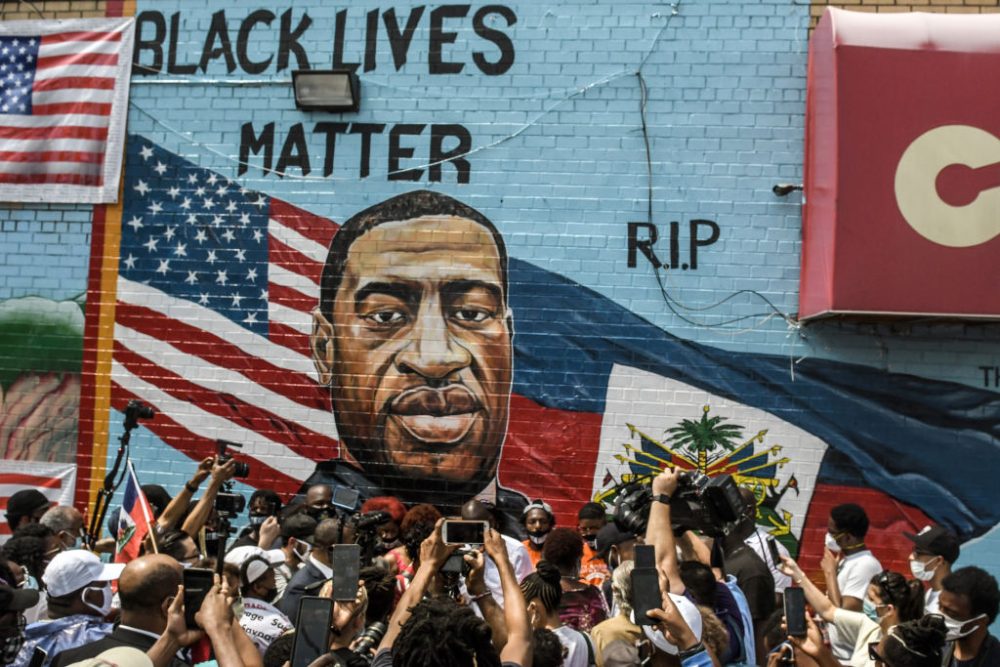Novelists will always be interested in enclosed communities — or the ‘total institution’, as sociologists say. When you separate a group of individuals from larger society with a wall and a controlling mechanism, all sorts of interesting facts about the way people interact become apparent. Convents, hospitals, asylums, schools, universities and prisons all serve the purpose. But different nations tend to prefer one sort of institution over another.
It’s a curious fact that where the British will enter into a novel of school life with gusto, Americans show a distinct preference for writing about prisons. Of course there are British novels with episodes set in prison — The Heart of Midlothian, Little Dorrit, Decline and Fall, The Loneliness of the Long-Distance Runner or some of Sarah Waters’s work. But on the whole, the English-language novel of prison life belongs to the Americans. John Cheever’s Falconer is evidently highly influential; and the subject seems to be increasingly popular — and readily rewarded. Rachel Kushner’s The Mars Room was shortlisted for last year’s Booker Prize and Tayari Jones’s An American Marriage won the Women’s Prize this year. Whether Colson Whitehead’s novel, which is far superior to either, will be rewarded in the same way remains to be seen.
Why American writers are drawn to the brutal and unjust total deprivation of liberty is an interesting question. On a basic level, Americans are more likely to be incarcerated than anyone else, at 655 per 100,000 head of population. (The UK has only 140 per 100,000). The US comprises 4.4 percent of the world’s population, but 22 percent of its prisoners. One must consider also the relationship between race and incarceration: black Americans go to jail at five times the rate of white Americans. (It is hardly any better in the UK.)
It would be wrong, however, to try to explain the appeal of a subject with reference to injustice, statistics or factual gravity — let alone the merits of the resulting fiction. A novel can take an admirable social position but still be terrible: one thinks of Elizabeth Taylor’s Angelica Deverell writing fervently in praise of vegetarianism. A great novel, conversely, can be deplorable in its political stance without affecting its merits in the slightest. We have to look away from the real-world consequences of the subject to understand why writers are drawn to it. Perhaps D.H. Lawrence was right in his Studies in Classic American Literature, that Americans talk ceaselessly about liberty because they have so little of it: ‘Americans have always been at a certain tension. Their liberty is a thing of sheer will, sheer tension: a liberty of THOU SHALT NOT.’
Whitehead made an immense impact in 2016 with his The Underground Railroad. In it, he found what every novelist must seek: a point of balance between the fantasy of artifice and the plausible reality of lives. The means by which 19th-century slaves fled the Southern states took on a physical reality, a secret railway with trains and carriages; on the other hand, the details of these lives remained dense with historical accuracy.
His splendid new novel The Nickel Boys addresses a real historical scandal: the American borstals that brutally abused and even murdered inmates throughout the 20th century. Whitehead’s institution is based on the Dozier School in Florida, but his book is not just a piece of documentary writing. It finds its justification in a marvelous play between the real situation and a novelistic artifice — one which, in the end, proves to be inherent in the human story. This is a perfect example of Marianne Moore’s comparing poetry to imaginary gardens with real toads in them.
‘In New York City there lived a Nickel Boy who went by the name of Elwood Curtis.’ The young Elwood is a highly intelligent, honorable black boy, growing up in the early 1960s with a fierce sense of the merits of education and a commitment to civil rights. His opportunities are few, and stringently controlled, but with the first volume of an encyclopedia and a couple of idealistic contacts, he seems to be making his way as best he can. Then disaster strikes. He accepts a lift from a stranger to his first day in college in what turns out to be a stolen car. Nobody treats a black teenager as a distinct individual, and Elwood is sent to the Nickel Academy, a brutal borstal.
Nickel is forcibly segregated between white and black inmates and ruled by violence. The warders, under Superintendent Spencer, ‘a real crack-of-dawner’, hand out savage beatings in the dead of night: ‘The white boys bruised differently than the black boys and called it the Ice Cream Factory because you came out with bruises of every color. The black boys called it the White House.’ (A fine example of Whitehead’s capacity to write plain, elegant, speech-like prose with dense, rippling suggestions, some only apparent in retrospect.) The society Elwood finds himself in hardly cares about the difference between one black boy and another: he is taken off to his first beating in the White House, though he is entirely innocent of any wrongdoing.
The institution doesn’t need walls; when inmates make a bid for freedom, they quickly discover that the violence explicitly endorsed within Nickel reaches far beyond the horizon. If you want an edifice devoted to the practice of repression, then you might as well call it the White House. Elwood, unlike the other boys, believes in the rule of law: he understands that it allows punishment, and so persuades his friend Turner that the warders’ practice of selling state supplies to locals for a profit would lead to the borstal being closed down. He records; he waits for an inspection; and he passes the records to the inspectors — with predictable results. The belief in justice meets the practice of that justice, with leather strap and an upraised rifle.
Whitehead has embedded the horrible historical episode in what might initially seem the most artificial literary device imaginable, the mistaken-identity plot. Over and over again one character is taken for another, and confusion or disaster ensue. From a certain viewpoint, The Nickel Boys resembles a medieval romance or The Comedy of Errors. But the genius of the novel is that mistaken identity was simply the condition under which black American men existed in relation to the structures of power. There are plenty of real-life cases in which an innocent black man was casually mistaken for another, and lynched. White America couldn’t be bothered to find out who was who.
Along with the plain beauty of his prose, Whitehead’s achievement is in having thought long and hard about the implications of this indifference. If white America can’t tell the difference between his Elwood and a criminal, it might enable another Elwood to escape and find a new life. When we meet Elwood much later, a saddened and hardened man with his own business, he seems a completely different person — changed, we think, by the savage years in Nickel. Only at the very end does the reversal, rooted both in real experience and in the rules of literary romance, make full and perfect sense.
This is a heartbreakingly good novel. Its excellence doesn’t lie in the attitude it takes to a social problem, which may immediately impress prize juries. Rather, this is a book which should last because of the elegant refinement of its treatment, and the harmonious and deeply affecting balance it strikes between real-life conditions, and the requirements of the finest and most penetrating art.
This article was originally published in The Spectator magazine.

























